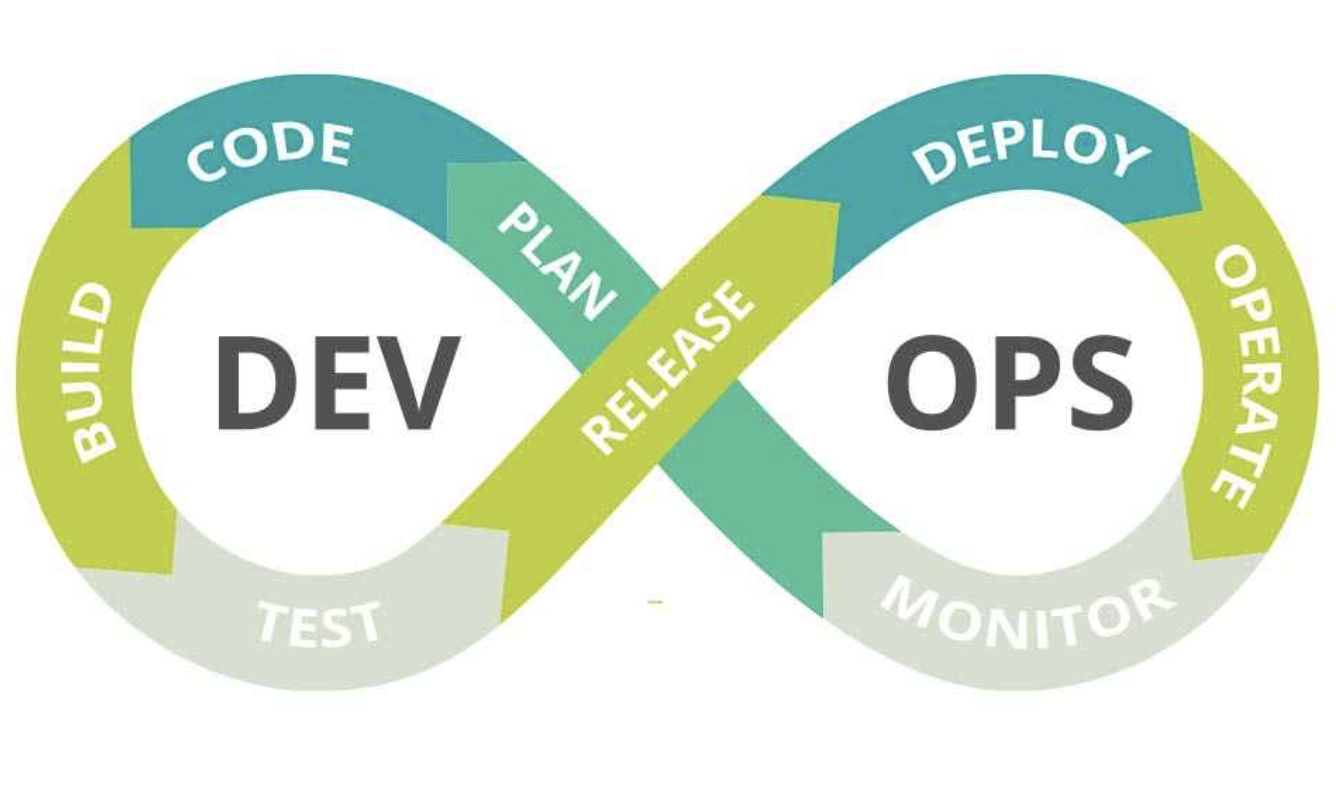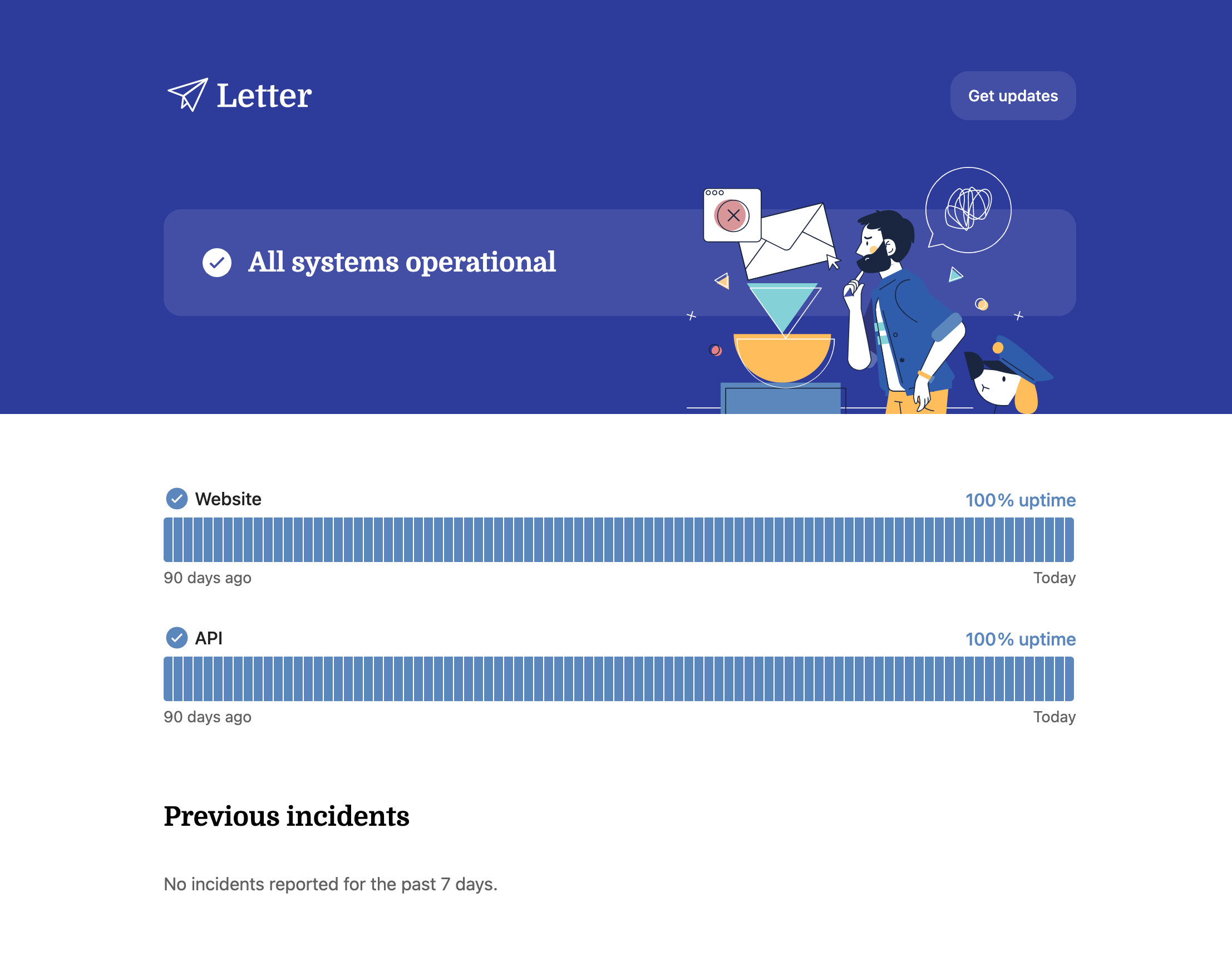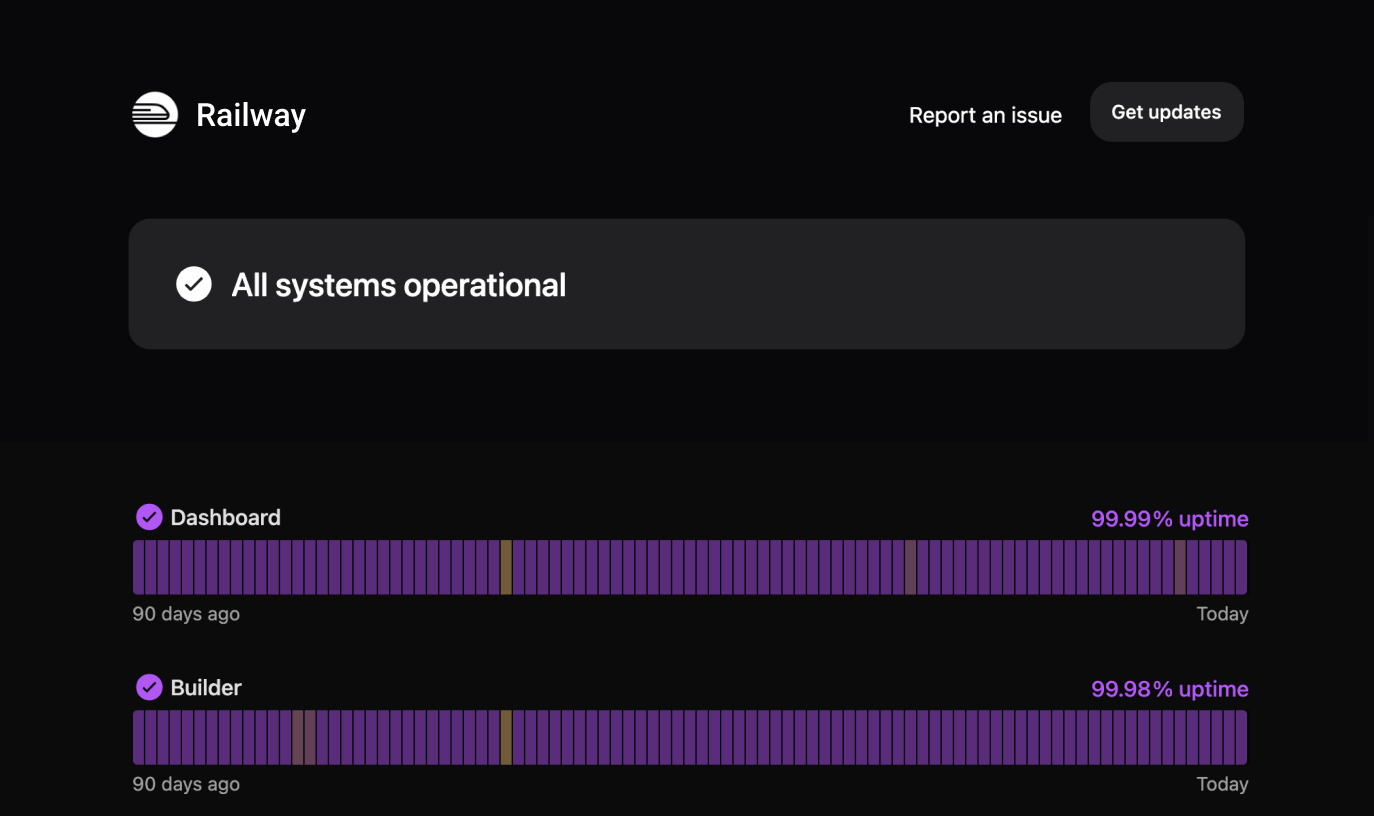Build Your DevOps Skills With These DevOps Projects

Demand for DevOps professionals has skyrocketed in recent years.
According to Indeed, DevOps engineers are in the top 20 most in-demand roles in IT in 2026, with 257,025 DevOps engineer job openings in the US alone. But entering this in-demand field isn’t always as simple as sending off a resume—you may need to demonstrate your DevOps skills in order to stand out from the competition.
How? Completing a DevOps project is a great way to get started.
From creating web servers to connecting your monitoring stack with a tool like Instatus, there are plenty of ways to showcase your DevOps abilities. And in this article, we’ll be taking a look at some of the most impressive DevOps projects you can undertake.
What is DevOps?
If you want to dive into the details of what DevOps is, how it works, and what the benefits are—check out our comprehensive DevOps guide. For now, we’ll stick to the basics.
At its core, DevOps is a cultural philosophy that removes the organizational barriers that separate software development and operations.

Source: ReQTest
DevOps is focused on increasing automation of the entire product delivery process—from development to production. This helps teams launch functional products quickly, with the ability to iterate and update them based on user feedback.
This process requires a fairly specialist set of skills and experience, as well as an understanding of various tools for deployment, testing, and monitoring (like Instatus). DevOps projects are a great way to gain some of those skills and, ultimately, add real value to your organization.
Things to Consider When Choosing a DevOps Project
Common DevOps Processes & Techniques
Under the umbrella of DevOps, there are a few processes and techniques that get more use than others. For example, removing silos, automating and streamlining processes, and building products that focus on ROI. Focus on projects that incorporate these processes to ensure you’re getting the most out of your DevOps project.
Key Tools & Skills
If your goal is to check off some desirable (and required) skills on your resume, it makes sense to plan a project around a few of them.
This might include:
- Programming languages
- Kubernetes
- Cloud
- Terraform
- CI/CD
- API design
- Security
- AI
Within each skill and tool, there are multiple learning routes you can go down, depending on the language, platform, or tools you pick.
Experience Required
If you’re a beginner, jumping straight into the deep end with a Terraform project will be tough. Work up to it by starting with a beginner project (e.g., building a chatbot) and practicing skills that allow you to progress.
10 DevOps Project Ideas
1. Create a Monitoring Dashboard for an App (and Integrate a Status Page)
Application monitoring and metric analysis are essential DevOps skills.
Build a monitoring dashboard with Grafana and Runscope to add instrumentation to applications, and servers. You’ll then need to add time-series data to a database and check that your instrumentation can read and display it. Add alerts for extra credit and make the dashboard more functional.
Other dashboard-building tools include HetrixTools, Freshping, and Checkly. For extra credit, you could also integrate your monitoring dashboard of choice with Instatus to create a beautiful, responsive status page that displays the app’s real-time performance.
Monitoring is a key DevOps workflow—and Instatus makes the process as painless as possible. You can keep it simple like SmartPass and just monitor your website and app.
Or you can go deeper like Itsu and track inventory, stock, and head office printer management—the choice is yours!
2. Build a Chatbot and Deploy it (open-source)
Chatbots are everywhere, so learning how to build and deploy one is a great MLOps (machine Learning Ops) using NLP (natural language processing) is to build and deploy one yourself.
Building a chatbot used to be complicated, but now it is something you can do with the right tutorials. For a chatbot to feel natural to the user, you need to understand what the end user would like to know, understand the components of a target conversation, and the possible flow of that conversation.
The result should be a chatbot that can perform actions depending on the information received and output text that is useful to the user.
Successfully deploying a working chatbot will build confidence in your DevOps abilities as you’ll have worked across development, build, deployment, monitoring, QA, and feedback.
3. Create a Simple Web Server
Every webpage you view is delivered to you from a web server, making servers one of the key building blocks that the web runs on. This straightforward project forces you to make choices regarding which hardware, OS, and hosting solution to use before choosing the software that will take an HTTP request from a browser and respond with an HTML, JSON, or API.
The server must then return content in XML, JSON, or CSV and either serve HTML as strings or load HTML files serving them up as content. Finally, you can perform routing using an HTTP Request Object. This simple project can prepare you for some of the more advanced tasks to come.
4. Create and Run a CI/CD Pipeline for an App
Automating processes is one of the key tenets of DevOps, as it improves reliability and efficiency across the whole workflow. Continuous integration and continuous delivery/continuous deployment (CI/CD) is the software development practice in which frequent and reliable code changes are made incrementally.
There are many CI/CD tools available on GitHub and other sources, such as Spring Petclinic. You should know how to set up a pipeline using one of them.
5. Java Application Using Gradle
Continuing the theme of automation, Gradle is a build automation tool that works across platforms and languages. This project involves taking a Java application and breaking it down into modular subprojects.
On completion, you’ll be able to build, run, test, and archive a Java application.
6. Improve Jenkins Remoting
Jenkins Remoting is a networking library used to implement communication layers. In this project, you’ll make Jenkins Remoting compatible with a bus technology like ActiveMQ or RabbitMQ. You’ll need to know the basics of networking, Java, and message queues, and you should be familiar with Java, Docker, and Selenium.
7. Set up a WordPress Website Using LAMP Stack
WordPress hosts more than 2 million websites worldwide, many of them dynamic—websites that generate pages in real-time, responding to dynamic characteristics including screen size and device type. This project teaches about dynamic websites that use databases. You’ll learn to work with a relational database, apache web server, and PHP language.
8. Create an API-based Application and Deploy it to Kubernetes
Kubernetes is “an open-source system for automating deployment, scaling, and management of containerized applications”. In other words, it’s an ideal DevOps tool.
First, you’ll have to create an app using your preferred language and an API. Then build a CI/CD pipeline and add it to the repository before containerizing your app and publishing it to Kubernetes.
9. Structure a Terraform Project
Terraform is an open-source tool created by HashiCorp and written in the Go programming language. This popular infrastructure as a code tool lets you “build, change, and version cloud and on-premise resources safely and efficiently”.
This project will teach you how to organize a Terraform project using DigitalOcean to deploy an Ubuntu 20.04 server (Droplet), install an Apache web server, and point your domain to it.
10. Create Default Base Images with Docker
Docker is a containerization tool that virtualizes operating systems by creating lightweight containers that host services and applications. One way to do this uses Passenger-Docker, a web server used by Rails developers to run applications.
A passenger-docker project creates a default base image that serves as a base for Ruby, Python, Node.js, and Meteor web app images and reduces the Dockerfile size. This in turn cuts down setup, build and run times.
11. Construct a Build Automation Framework
To make the software building process smooth and efficient, you introduce automation into the mix. This enables you to automate crucial processes like code compilation and test execution, making life simpler for everyone involved. You have the ability to design a unique framework as a skilled DevOps engineer that makes it easy to build new software versions. Developers can concentrate on making fantastic features while the system takes care of the minute details of building and testing, resulting in a quicker and more dependable software development process.
12. Build a Version Control System (VCS)
Using a Version Control System helps you keep track of all the different versions, making it easy to switch between them and explore the history of your code changes. Even independent branches can be made to work on certain features without affecting the main code. At first, setting up a repository could seem difficult, but you'll get the hang of it.
Next, you’ll start by saving your code in the version control system and then dive into exploring its powerful features like navigating history and handling branches.
13. Execute a Selenium Project
Selenium is a powerful tool that automates web browsers, a key component in modern software development. Trainees should have a firm understanding of automation and web development ideas to take on this project.
Once you have a good foundation, you can take on more advanced challenges like building and executing a Selenium project. This kind of project is incredibly valuable as it allows students to reinforce their knowledge and skills. Moreover, completing this project provides a real-world example of how DevOps concepts come to life in practical scenarios. It's an excellent approach for students to gain knowledge of and put their skills to use in the field of DevOps.
14. Run a CD Pipeline using Amazon Web Services (AWS)
In this project, your goal is to create a smooth and efficient process for delivering a small web application. To achieve this, you'll start by using a version control system to store and manage your source code effectively. Next, you'll learn how to set up this continuous delivery pipeline. Once it's up and running, every time you make changes to your source code, the pipeline will automatically deploy your web application, making it easy to update and release new features to the world.
AWS, the Amazon Web Services, provides a set of flexible tools that help businesses create and deliver products faster and more dependably when combined with DevOps practices. With AWS, you can quickly set up and manage your infrastructure, simply deploy your application code, automate the software release process, and closely monitor the performance of your application.
15. Learn Source Code Management and Git Branching
In the world of DevOps, knowing how to manage source code is a must-have skill, and Git is one of the most popular version control systems out there. Git's branching functionality, which enables you to work on many aspects of your project at once, is one of its most distinctive features. To get really good at using Git's branching abilities, work on a project that lets you practice creating branches, merging them, and more.
DevOps is an ethos—a way of working, so always keep these best practices in mind:
- Develop a collaborative culture: This is one of the more important aspects of DevOps ethos, as good communication eliminates silos.
- Prioritize customer satisfaction: This is achieved with regular upgrades that meet business requirements, delivered quickly.
- Embrace the Minimum Viable Product (MVP) mindset: An MVP fosters rapid feedback, which helps teams course correct earlier in the product lifecycle.
- Adopt continuous integration and delivery (CI/CD): Integrating code changes in a single repository is another way to eliminate silos.
- Use the right tools: There are many tools that support DevOps processes. Choose the ones that best improve communications, management, deployment, and customer feedback for your project.
Conclusion
DevOps projects are a great way to get your foot in the door of modern software development. By showing off your skills (and picking up new ones) you can demonstrate your value to the industry, and help bridge the gap between development and operations.
And if you’re looking for experience with a powerful status page builder, Instatus is a great option. Instatus allows you to quickly set up and manage real-time status pages, with advanced integrations and customizable alerting.
Sign up for a free Instatus account and start building relationships with your users today.
Get ready for downtime
Monitor your services
Fix incidents with your team
Share your status with customers



